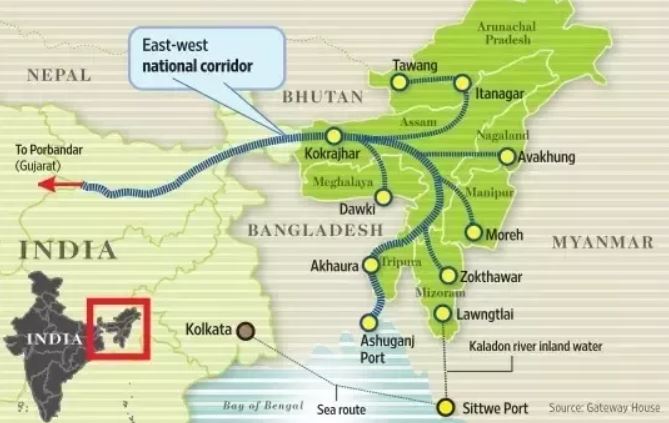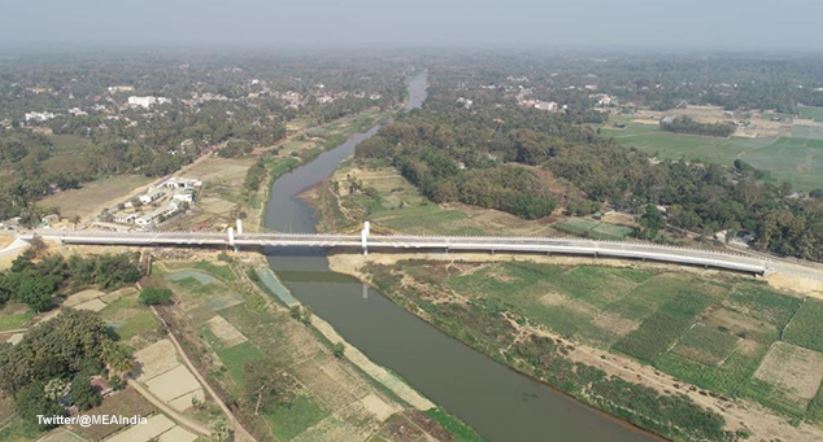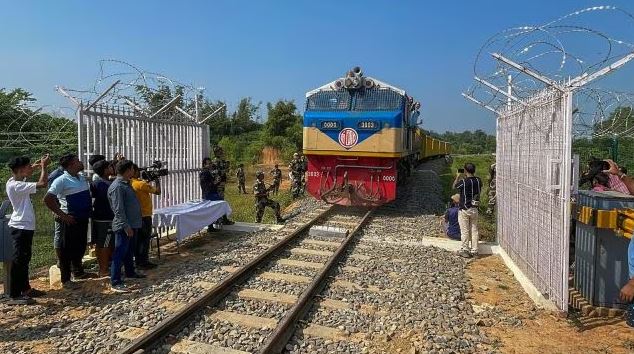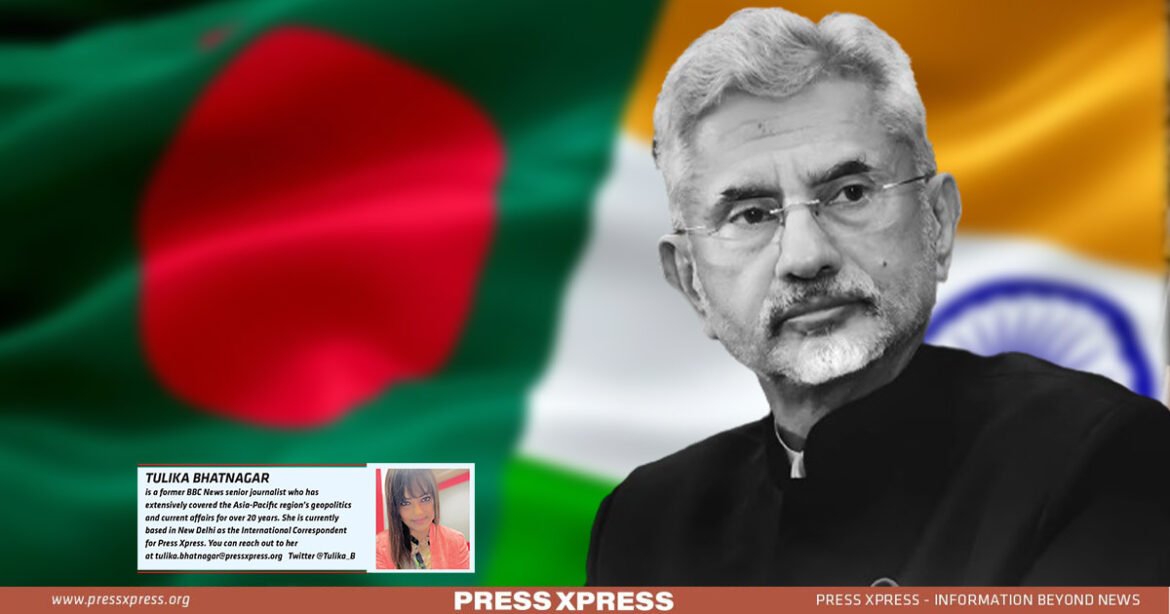When India’s Foreign Minister S Jaishankar recently said that northeastern India was a “big beneficiary” of the improvement in ties with neighbouring Bangladesh, he wasn’t just referring to the country’s “Act East” policy, but also the Modi government’s renewed focus on “Act Fast for Northeast” strategy.
Since 2014, Indian PM Narendra Modi’s government has spent more than Rs 5 lakh crore in improving infrastructure and connectivity in the northeast.
You Can Also Read: INDIAN FIRMS FEEL THE HEAT AS BANGLADESH SHIPMENTS TAKE OVER DELHI AIRPORT
Another Rs 11 lakh crore worth of development projects are in the fray.
According to Minister of State for the Development of North Eastern Region, BL Verma, this region holds “immense investment potential”. “Both big and medium-sized corporations have interest.”
And Bangladesh is the trump card for India in its implementation of the Act Fast for Northeast policy.
Bangladesh “key” to India’s northeast
Bangladesh and India’s northeast are much more than next-door neighbours sharing hundreds of kilometres of land border.
They are also “natural markets” for each other, whether it is trade, commerce, or connectivity.
And Siliguri Corridor, the 22 km narrow stretch of land that separates northeastern region from India mainland, heightened the significance of Bangladesh for India.

For example, geographically, if one were to travel from Agartala to Kolkata, they would have to cover a distance of over 1,650 km via Shillong and Guwahati in India. But an alternative route via Bangladesh would take them just about 550 km.
In terms of trade, this means a cargo truck taking the Indian route would have to pay higher costs, resulting in higher prices of goods.
According to a World Bank report, the prices of goods in the northeast have always been up to 60% higher in rural areas, and 30% higher in urban locations – compared to the prices of the same goods in West Bengal.
But if the same cargo truck travelled via the Bangladesh route, it would result in decreased travel costs, and therefore, more affordable goods.
Specifically, if cargo trucks transit via Bangladesh, it reduces distance by almost 65% and transport costs by 68%, the World Bank estimates. The 1,650 km journey from Agartala to Kolkata is cut short to 550 km via road through Bangladesh, and a mere 200 km for direct access to the Chattogram port in Bangladesh.
In fact, on average, the distance between Bangladesh’s major cities and northeast India is around 20-300 km.
Shorter journeys would also scale up wages. As per the World Bank, the average wage increase can be between 4.5-11% for bordering Indian states, and 24% for Bangladeshi states, particularly Dhaka and Chattogram.
As a result, Bangladesh is always crucial for the northeastern region’s connectivity by rail, road, and river routes.
Gaining momentum
Several connectivity projects have gained momentum after Bangladesh allowed India to use its Chattogram and Mongla ports, and transit facilities to India’s northeastern states. The Maitri Setu (bridge) built on the Feni River has already been inaugurated for transportation and passengers through the bridge.

In particular, it has helped the Tripura state to become India’s gateway to southeast countries via Bangladesh.
Additionally, the Indo-Bangla rail link will be a game changer once the connectivity is operational.
“The 32-hour train journey from Agartala to Kolkata through Bangladesh will be completed in 10 hours,” says Union Minister of State for Social Justice and Social Empowerment, Pratima Bhoumik. “It will boost trade, business, investment, and people’s movement in the northeastern state into the heart of India,” she says.
In recent years, Delhi and Dhaka have come closer in trade ties, launching several bus, train and air services, including the Agartala-Akhaura cross-border rail link and Khulna-Mongla rail line, opening immigration checkpoints and upgrading border infrastructure.
India has also expressed interest in building and operating an airport in Bangladesh. If it materialises, flights between Dhaka and Agartala as well as other Bangladeshi cities such as Chattogram and Sylhet would be operated. Tripura’s Maharaja Bir Bikram airport will become the third international airport in the landlocked northeastern region once its terminal is completed by the end of this year.

The Agartala-Akhaura rail link is also of particular significance. Once completed this year, it will connect Gangasagar in Bangladesh to Nischintapur in India along a 10.6 km line, and Nischintapur to Agartala railway station along a 5.46 km track in India.
It will reduce travel time from the current 31 to 10 hours.
India and Bangladesh currently have four operational rail links between West Bengal and Western Bangladesh — Petrapole-Benapole, Gede-Darshana, Radhikapur-Biral, and Singhabad-Rohanpur. The present line will not only help people from Agartala but also those from the Indian state of Mizoram, which is located about 150 km away.
As India’s bridge to Southeast Asia, Bangladesh is a natural pillar of the Act East policy. It is also an important part of regional cooperation fora, such as BBIN and BIMSTEC and the development of all the northeastern states is inextricably linked to Bangladesh, making it a crucial part of Modi government’s Act Fast for Northeast strategy.


